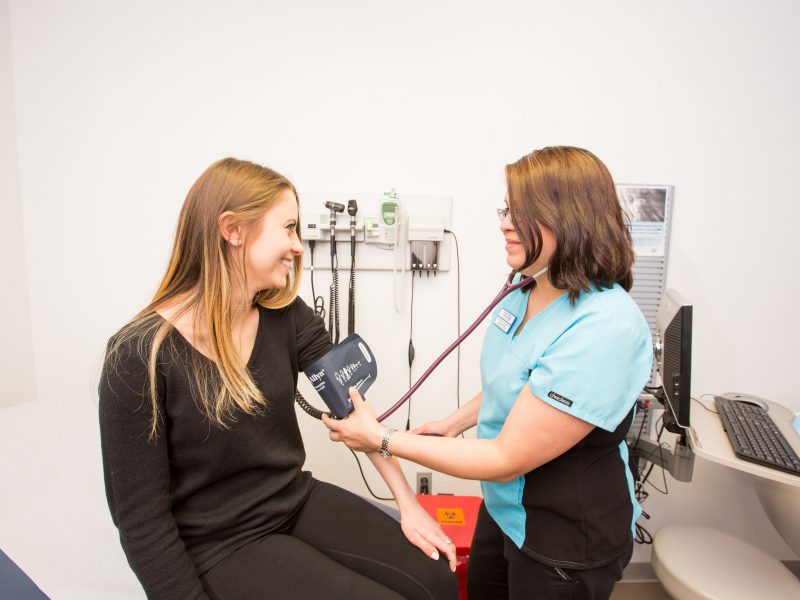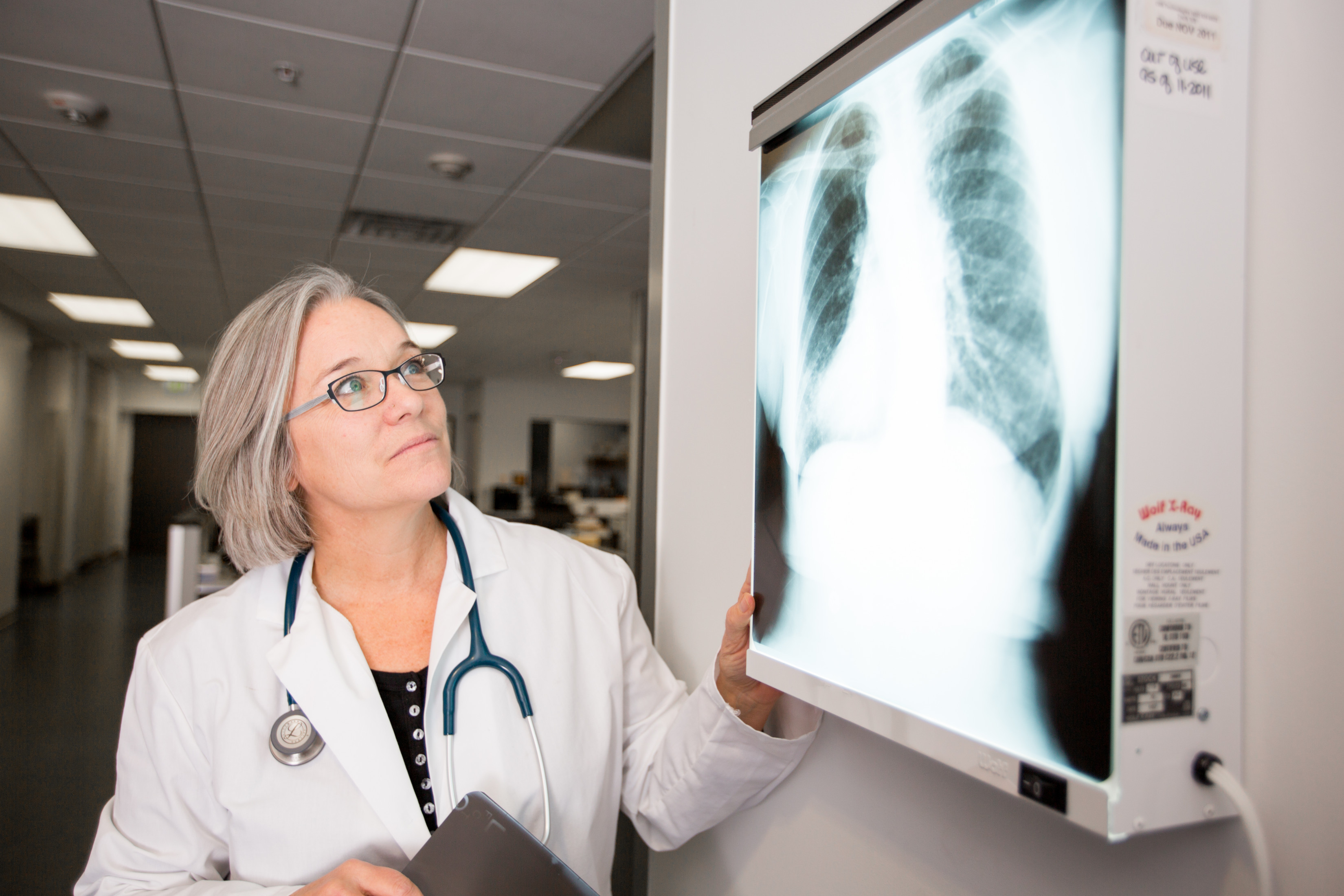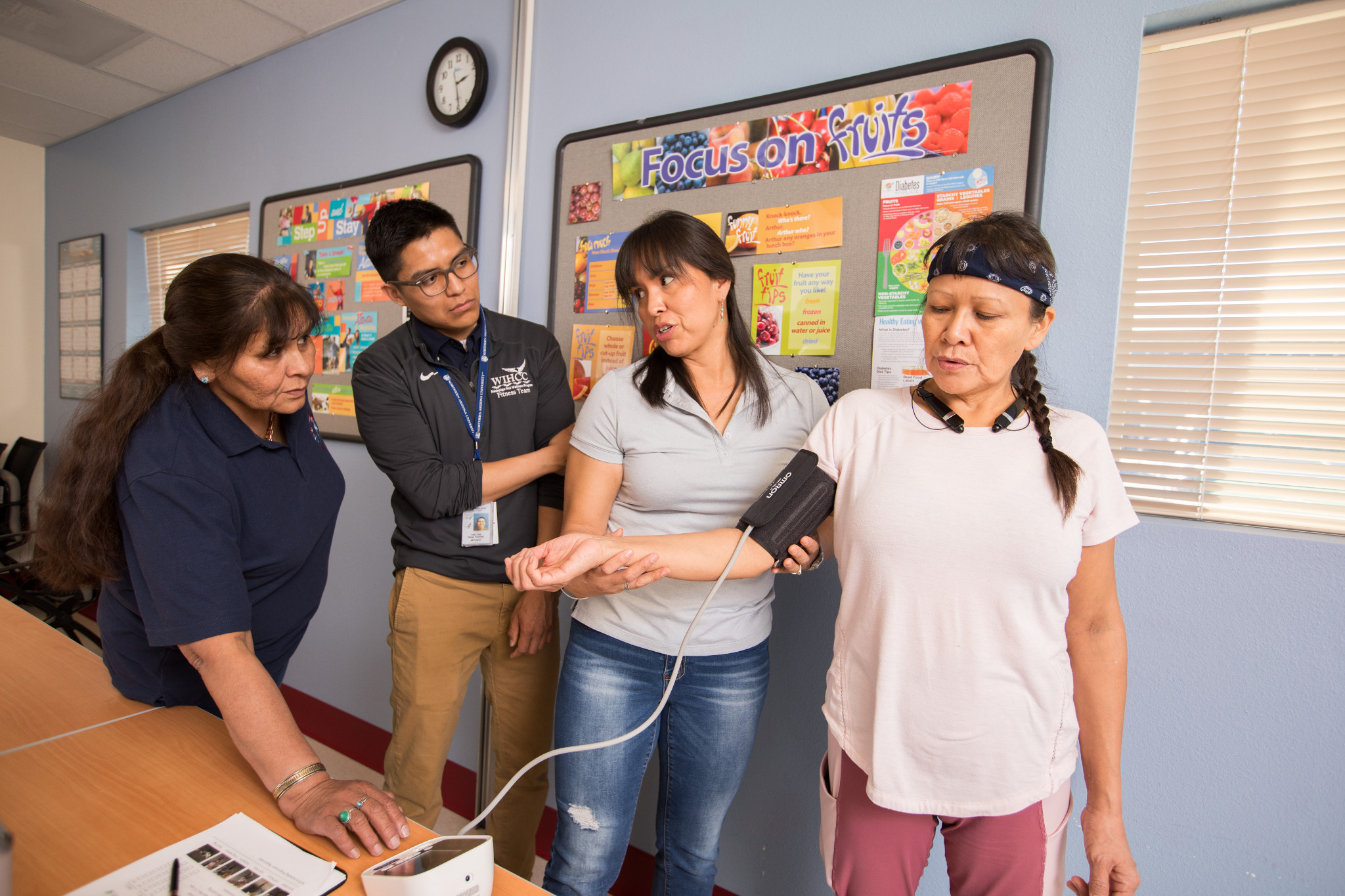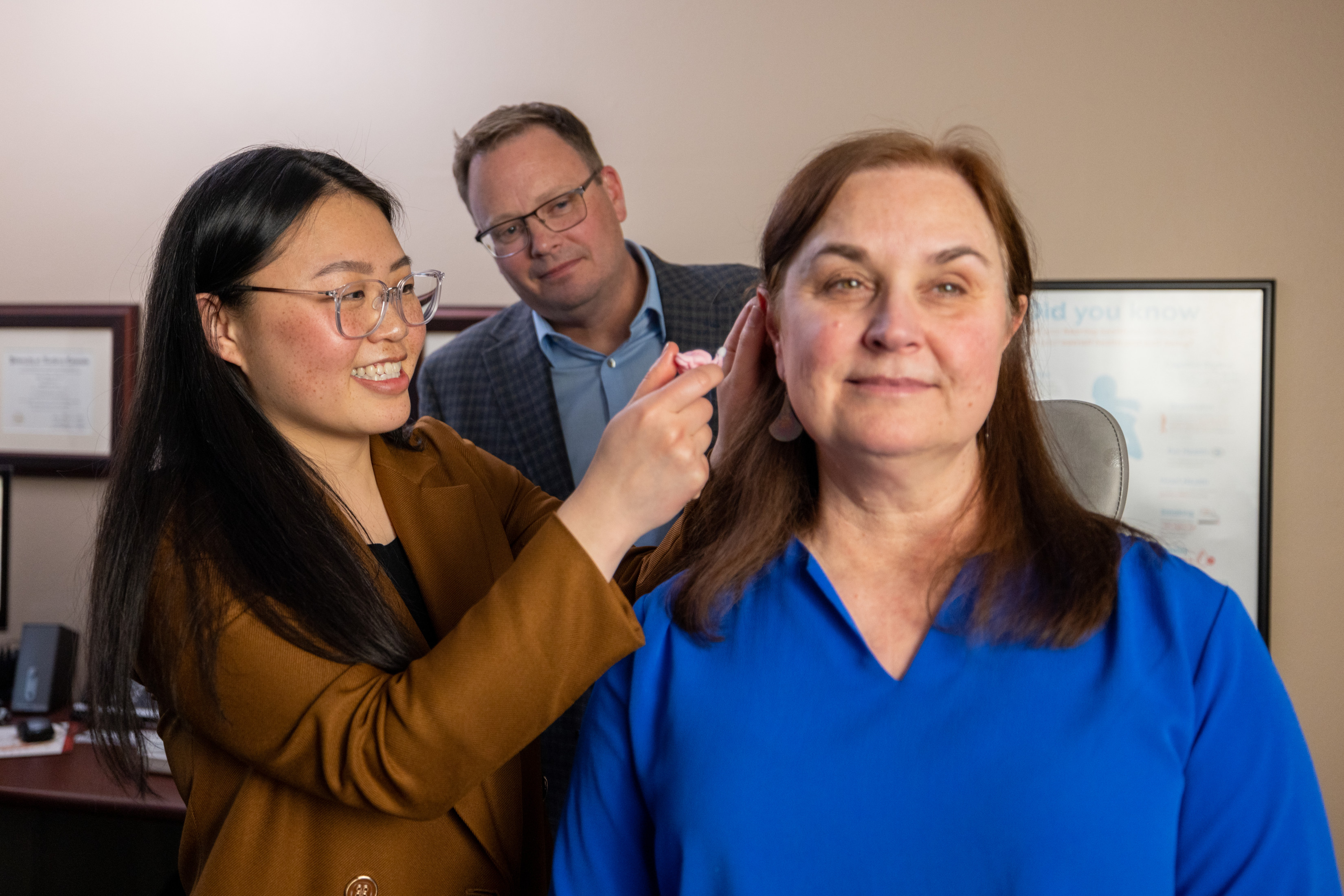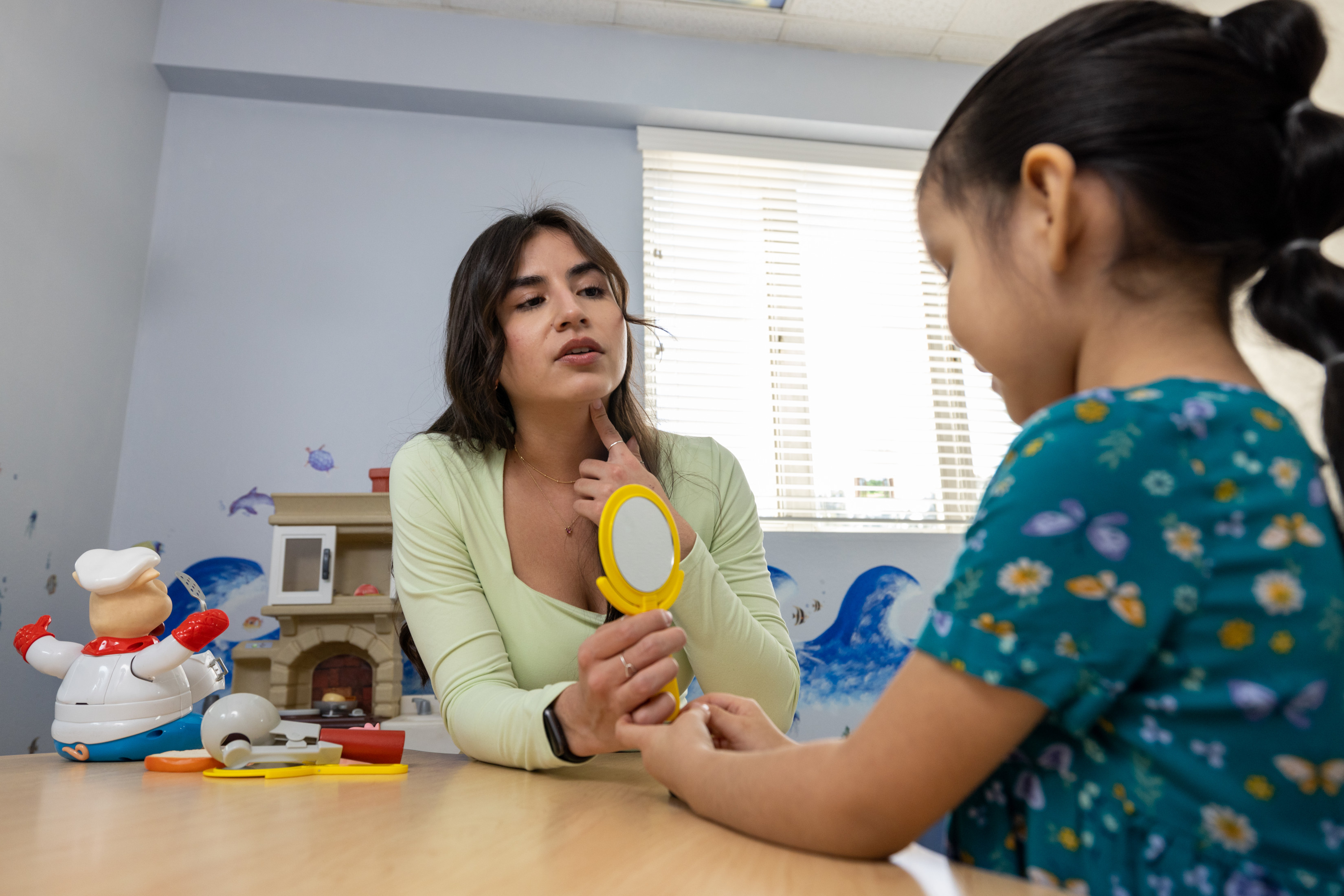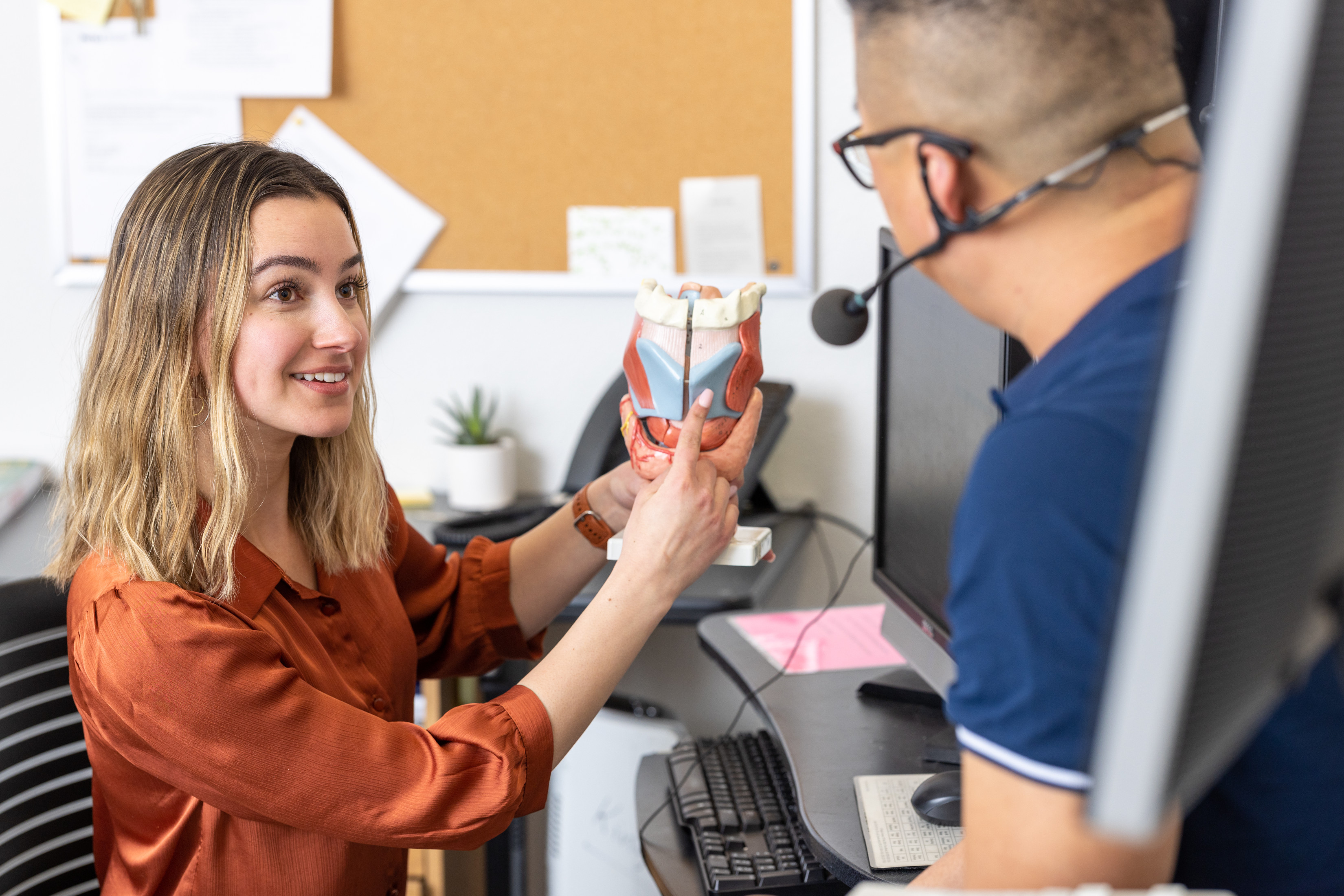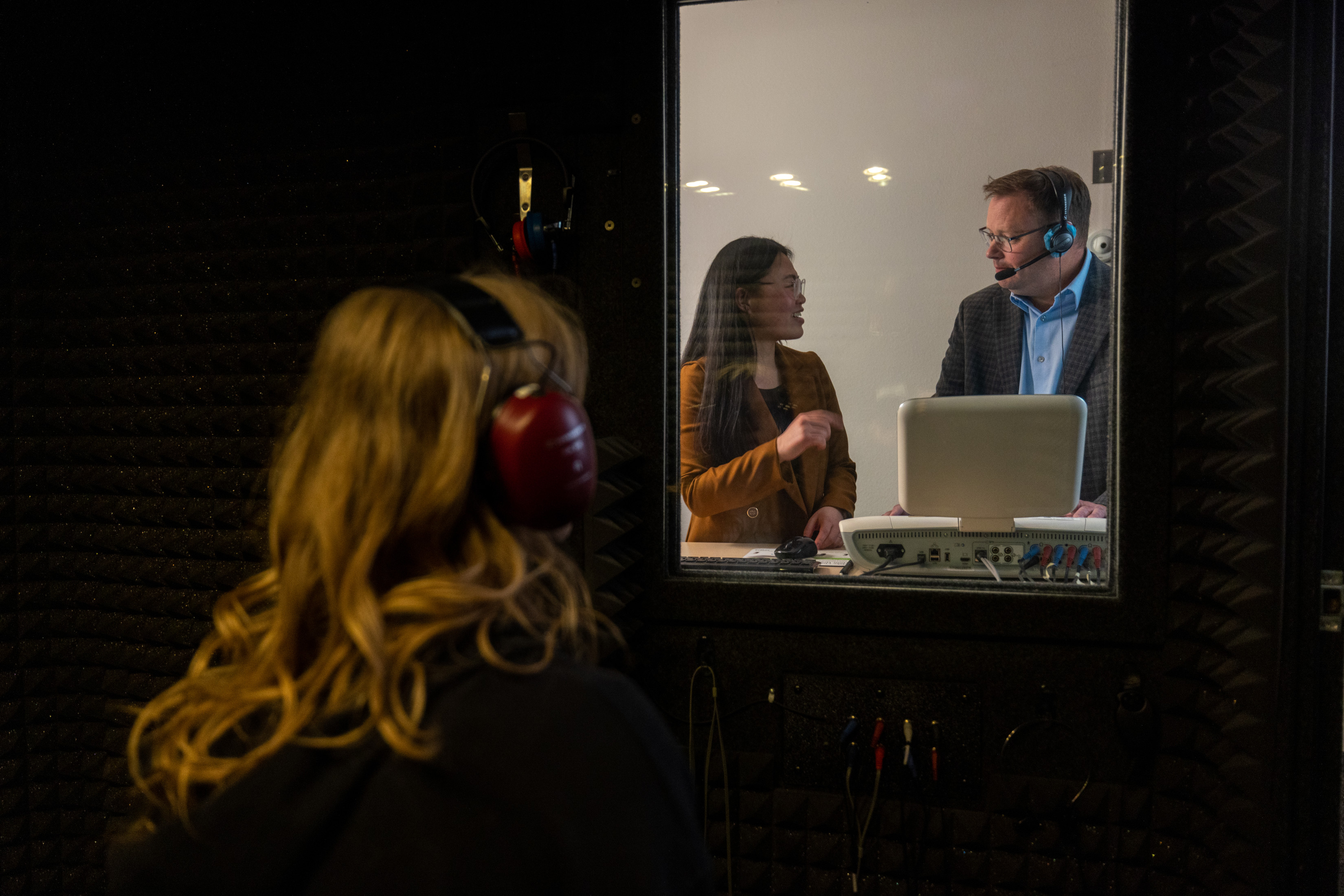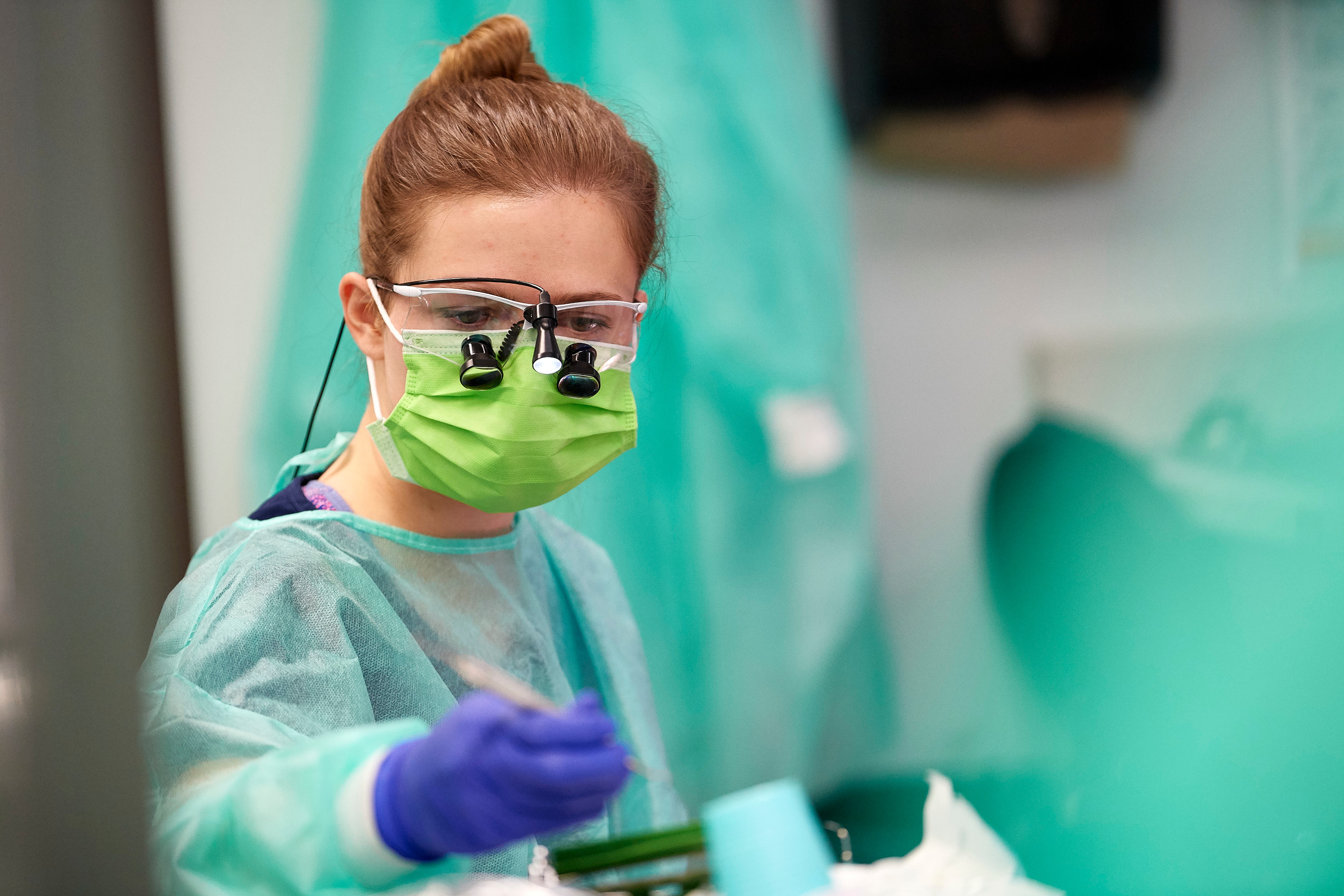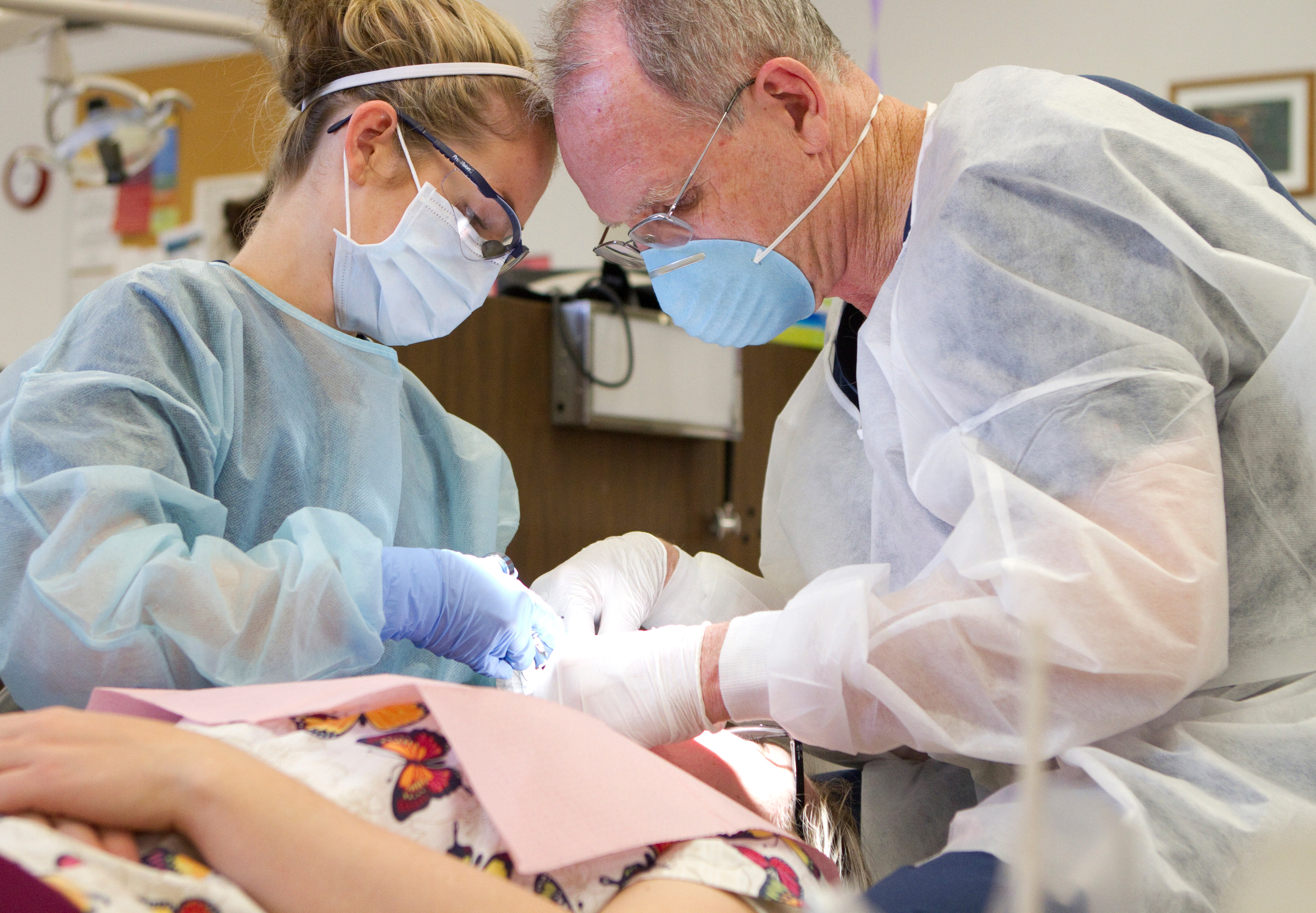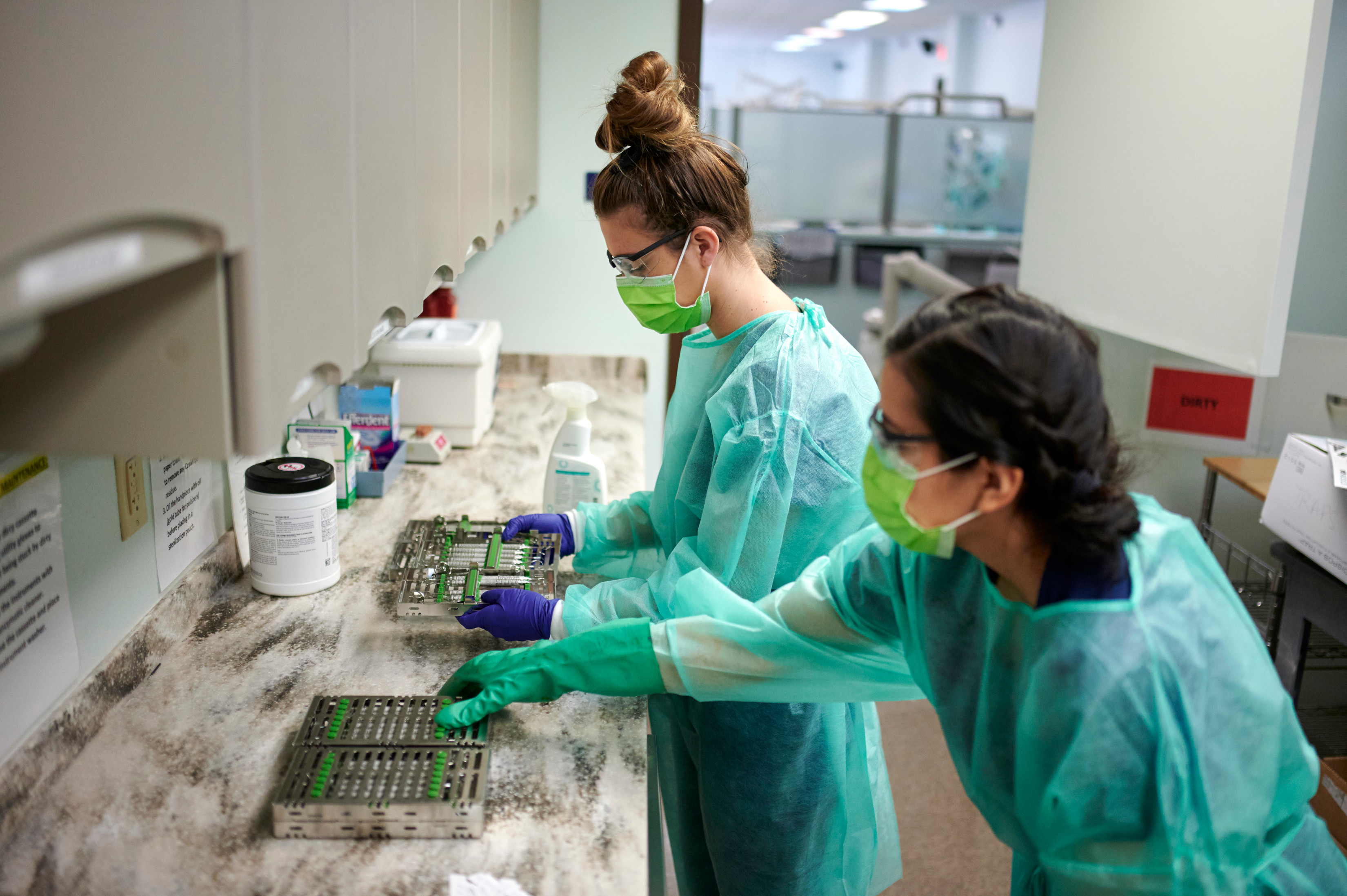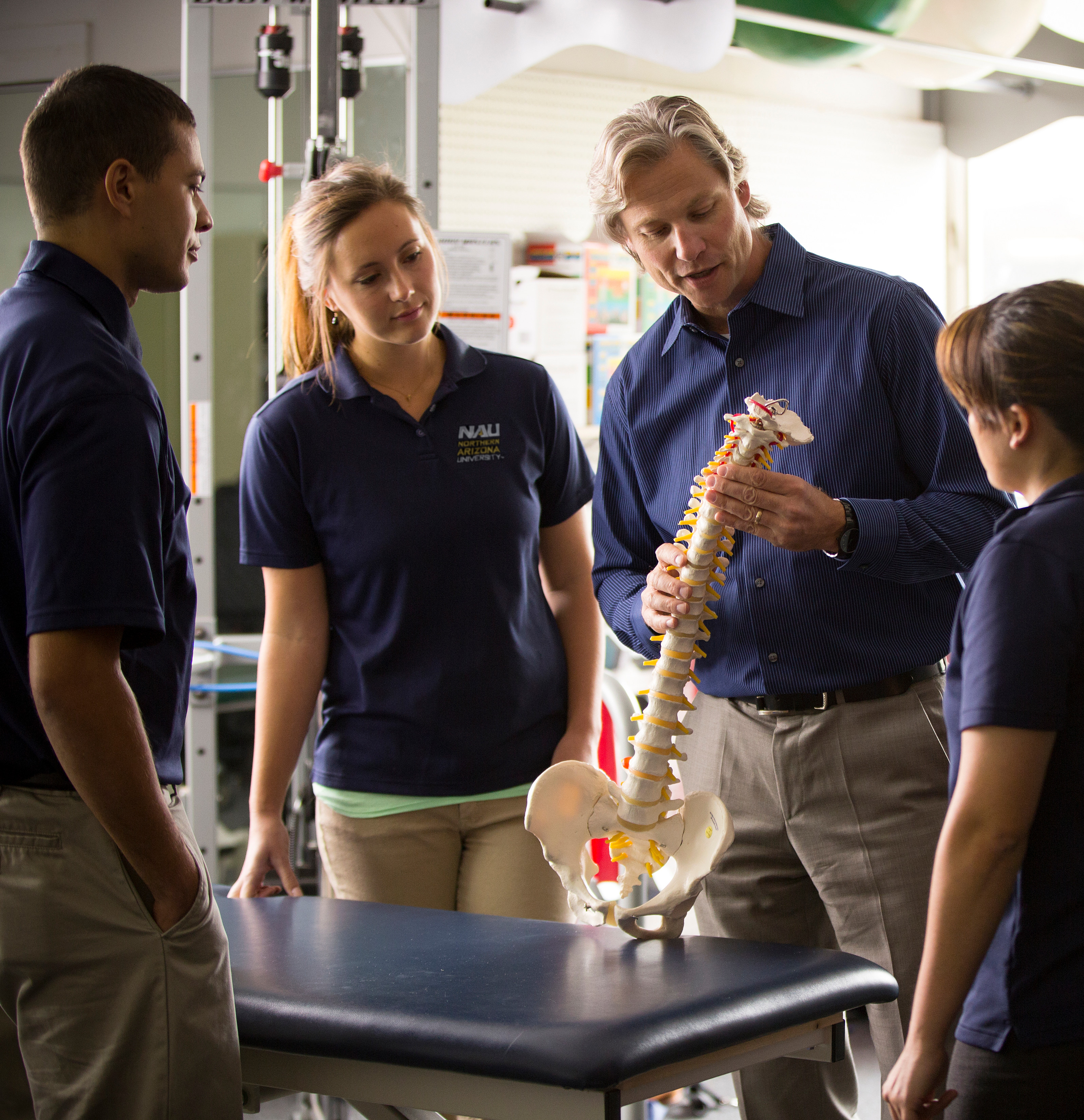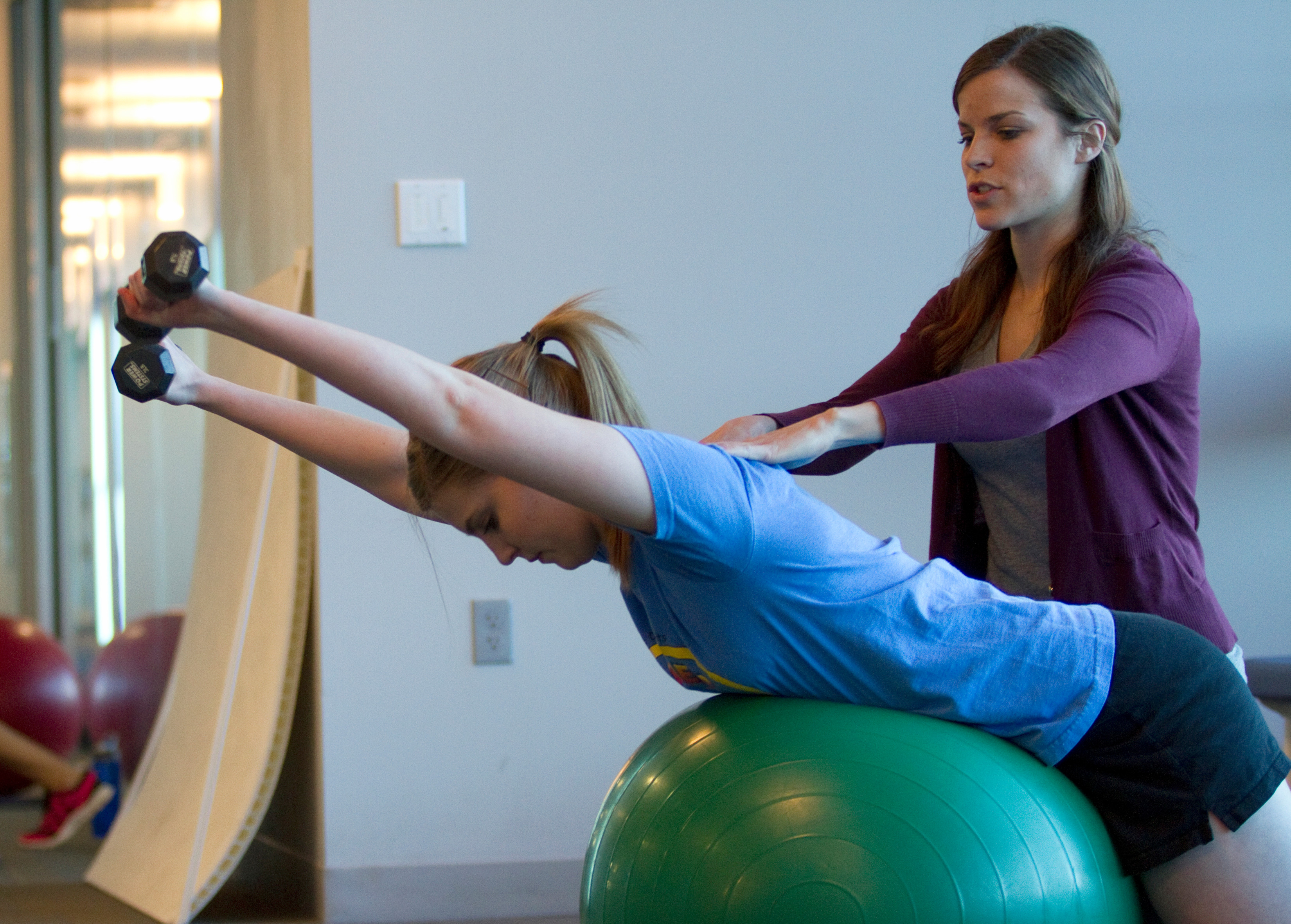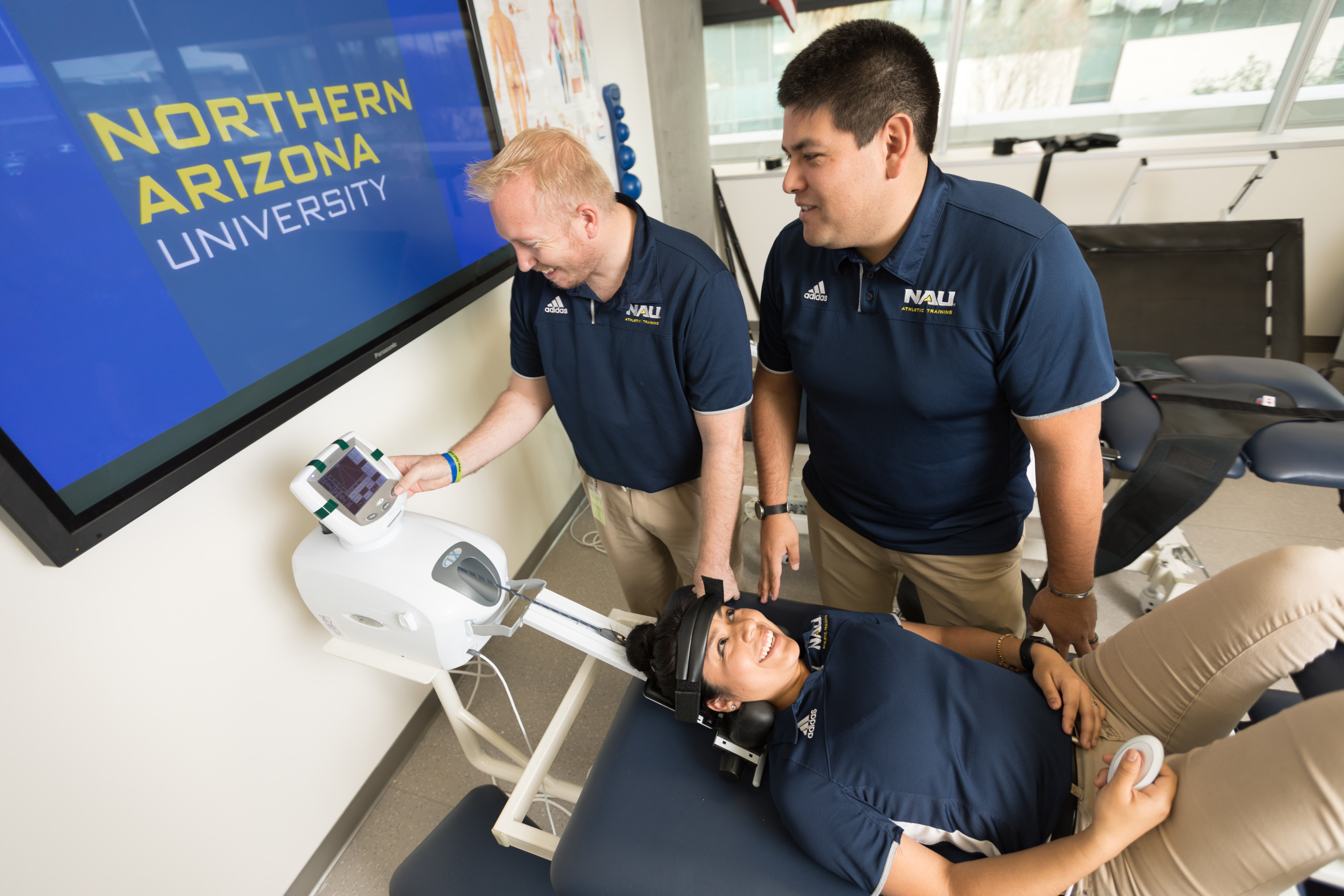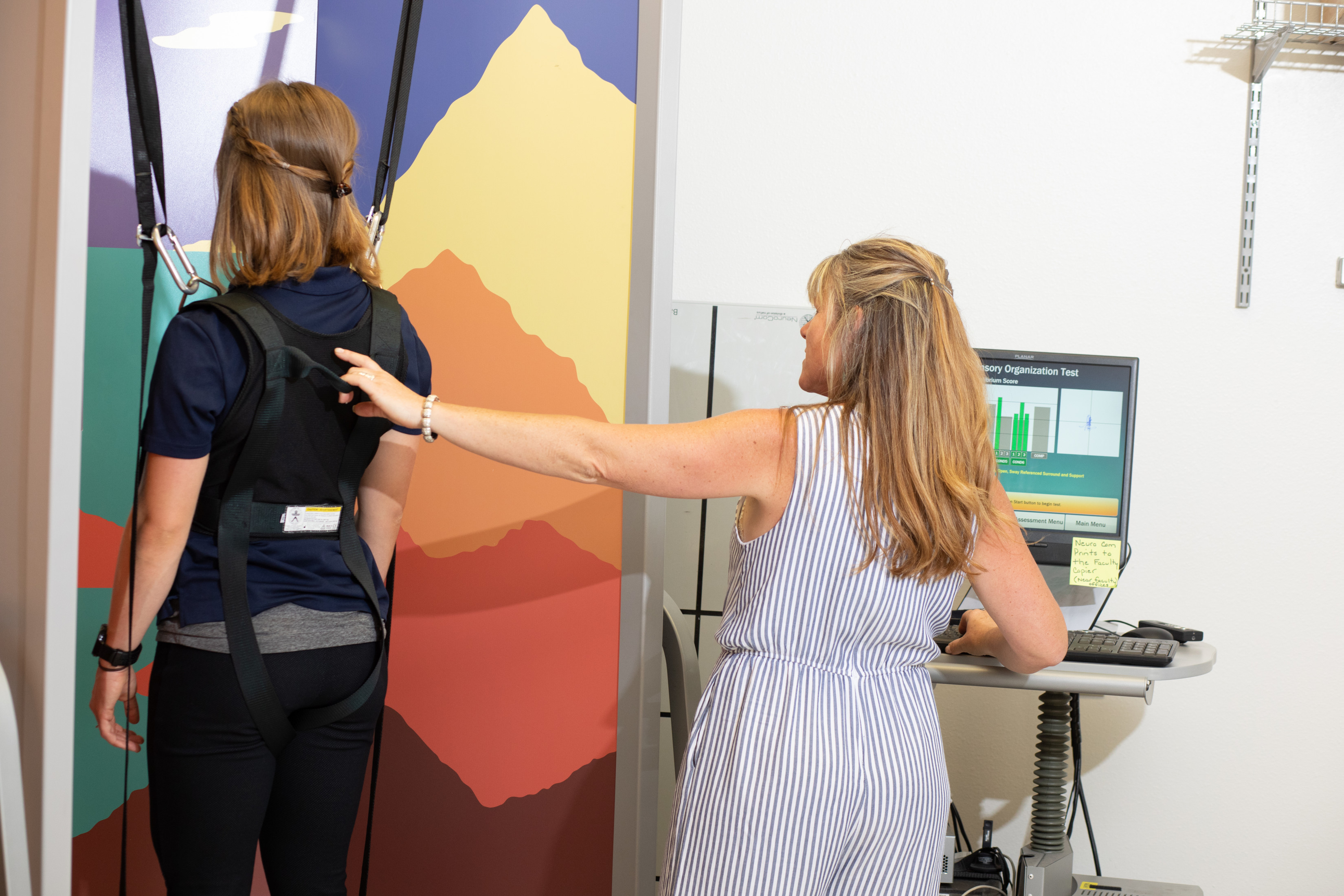Healthcare labs, community clinics, and faculty research
Scrubs, lab coats, track suits, and more—we wear it all, and do it all. Many students in the College of Health and Human Services become well-rounded healthcare professionals through research experience.
This professional preparation helps our graduates get ready to take an active role in their community’s health initiatives. Aspiring researchers work alongside our experienced faculty members in every department, enjoying experiential research in labs, community clinics, and scholarly research projects.
Faculty research by department
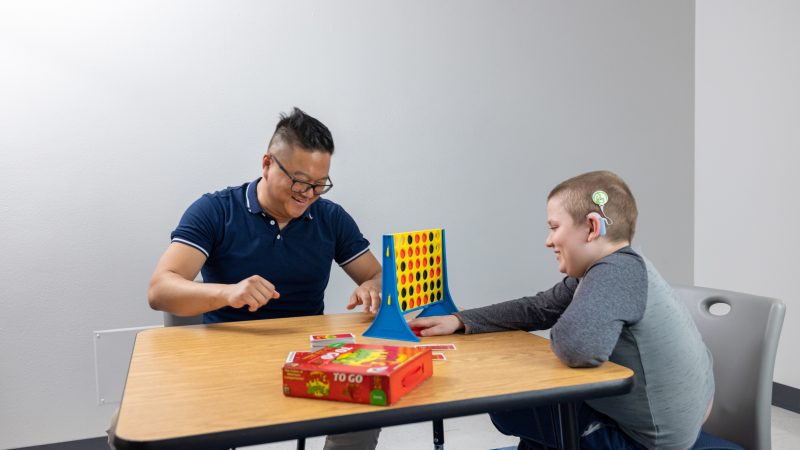
Communication Sciences and Disorders
Research programs in the Department of Communication Sciences and Disorders (CSD) focus on populations across the lifespan and cover the full communication cycle, from hearing to speaking. We conduct studies on topics ranging from the cellular and molecular levels of basic science to the provision of services to clinical populations. Research in CSD lives up to its tagline: “From science to service.”
Through all research, teaching, and clinical activities, our department is committed to the cultural and linguistic diversity of our region and nation.
Individual faculty areas of research and expertise are listed in the directory. CSD research is conducted in four specialty areas:
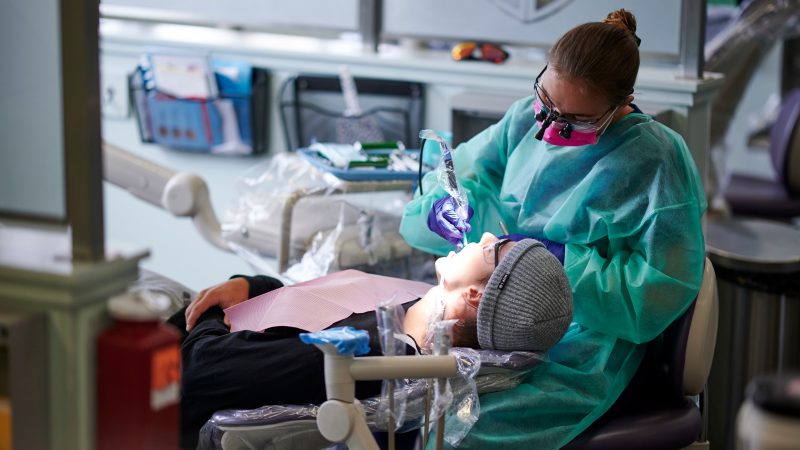
Dental Hygiene
Our faculty research includes diverse offerings. We are united by an emphasis on improving oral health disparities in rural and underserved communities regionally, nationally, and internationally.
Research is key to improving education, clinical practice, and patient outcomes. Our work affects practice, health outcomes, quality of care, and health policy to improve the oral health of our communities. We provide support, mentorship, and leadership to students and faculty through opportunities to collaborate on projects and through interprofessional education and practice.
Faculty conduct interdisciplinary research in teams in the following areas:

Project zero: Elementary-aged Children
Impact of service learning for DH students
Project Zero involved dental hygiene (DH) students in delivery of preventive services to high-risk children through a school-based prevention program. Project Zero provided the opportunity for dental hygiene students to learn about public health needs and apply public health methods as they delivered services in a school-based program, with the goal of increasing the knowledge, skill, and comfort of dental hygiene students in the provision of preventive oral care for children in public health settings. PI Tricia Moore.
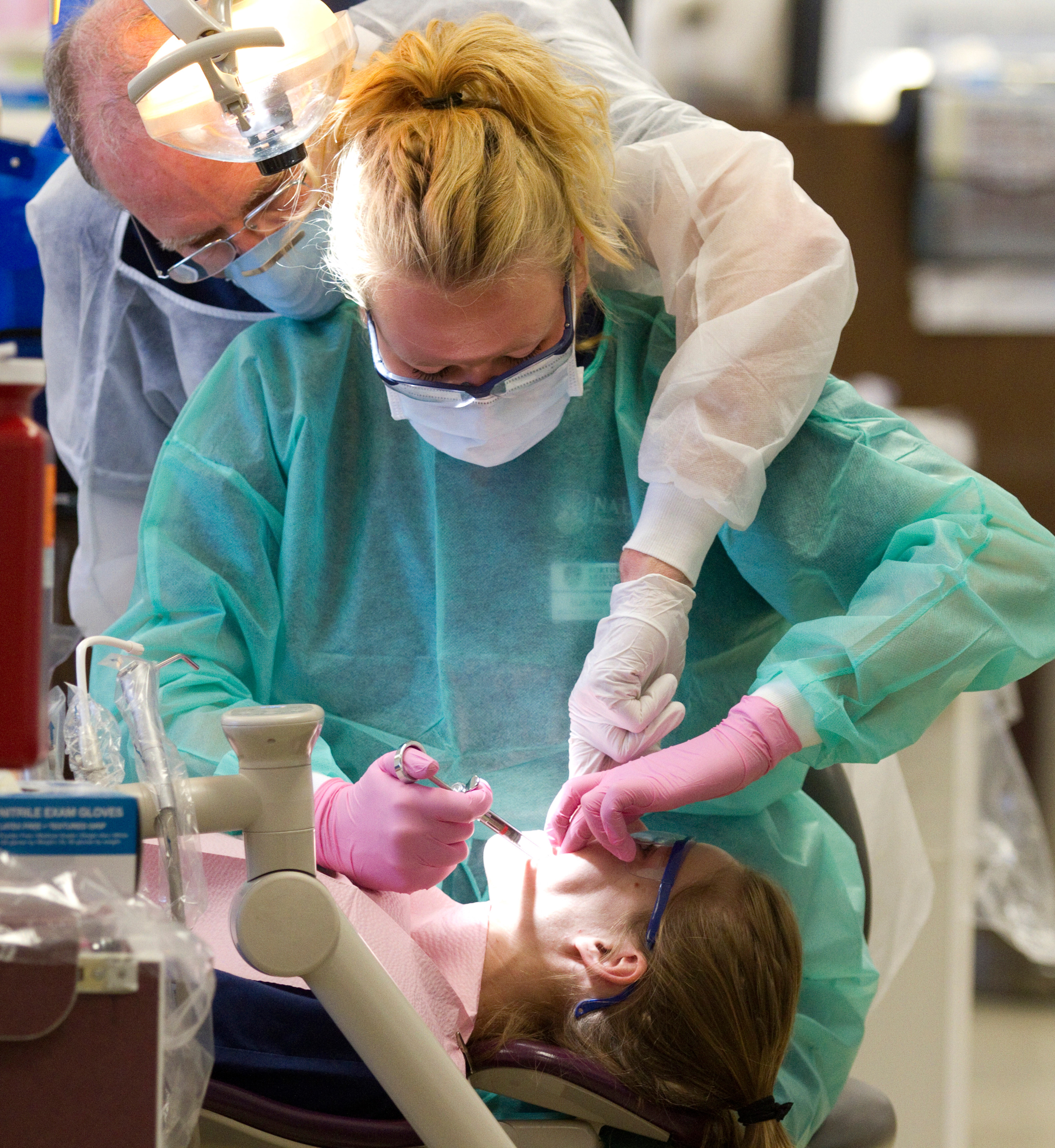
Project zero: Women and Infants
Impact of oral health integration into maternal/child care on pregnant women and their infants’ health
Women and Infants examines the impact of oral health integration into maternal/child care on pregnant women and their infants’ health through consultation and training with health providers and implementation of quality improvement methodology in healthcare facilities that serve the target populations. This pilot project supports data analysis in an identified health system with a focus on access to dental care and improved dental outcomes on children. Women and Infants is funded by the US Department of Health, Health Resources and Services Administration, Maternal Child Health Grant #H47MC2918, PI Denise Muesch Helm.
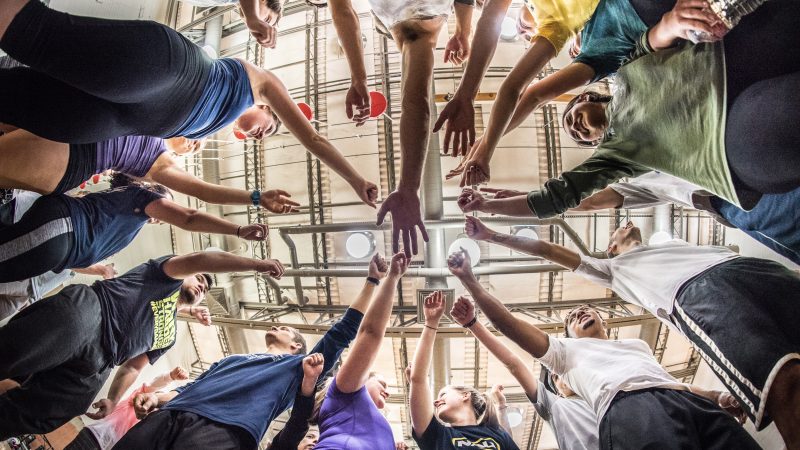
Health Sciences
Broadly, the Department of Health Sciences has research expertise in physical activity surveillance and exercise prescription, nutrition, and public health community-based interventions, particularly those with an evaluation component and working with Native American populations. Review our faculty members’ areas of expertise to find the right fit for you.
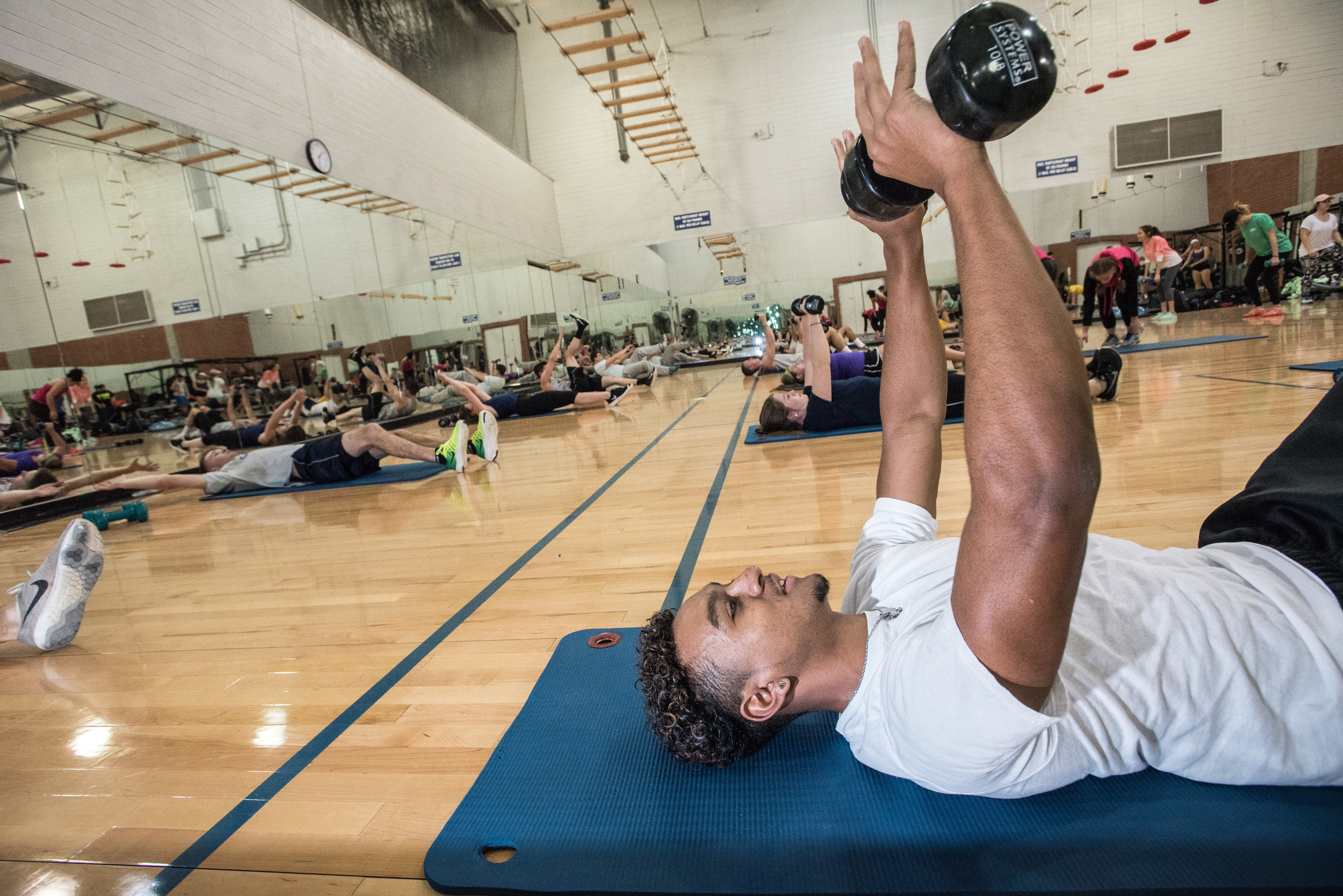
Physical activity
- Dr. Dierdra Bycura: Exercise prescription and adherence. Working with microbiome changes associated with different exercise modalities.
- Dr. Dirk de Heer: Evaluation of community-based physical activity interventions. Currently working with Fit Kids of Northern Arizona to examine clinically-relevant physical activity interventions for childhood obesity.
- Dr. Steve Palmer: Effectiveness of physical education in school settings. Currently working with FUSD to implement positive PE changes in classrooms.
- Dr. Tim Behrens: Evaluation of community-based physical activity interventions. Currently working with Colorado schools to evaluate physical activity offerings.
- Dr. Chris Repka: Exercise prescription in cancer treatment. Currently working with ACSM to update/develop strength testing norms.
- Dr. Lynda Ransdell: Enhancing athletic performance of female athletes, physical activity interventions, and promoting physical activity in females and underserved populations. Currently working with elite athletic teams to profile physical performance capabilities.

Nutrition
- Dr. Dawn Clifford: Motivational interviewing for weight management. Currently working to develop training tools for motivational interviewing.
- Dr. Dirk de Heer: Evaluation of food environments. Currently working with the Navajo Nation to evaluate the effectiveness of junk-food taxes.
- Dr. Tim Behrens: Evaluation of food environments. Currently working with the Navajo Nation to evaluate the effectiveness of junk-food taxes.
- Dr. Priscilla Sanderson: Evaluation of food environments. Currently working with the Navajo Nation to evaluate the effectiveness of junk-food taxes.

Community-based interventions
- Dr. Dirk de Heer: Evaluation of food environments. Currently working with the Navajo Nation to evaluate the effectiveness of junk-food taxes.
- Dr. Tim Behrens: Evaluation of food environments. Currently working with the Navajo Nation to evaluate the effectiveness of junk-food taxes.
- Dr. Priscilla Sanderson: Evaluation of food environments. Currently working with the Navajo Nation to evaluate the effectiveness of junk-food taxes.
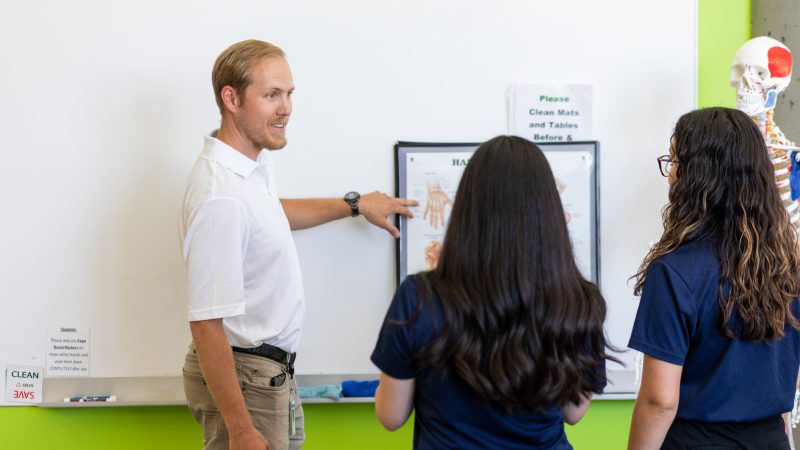
Occupational Therapy
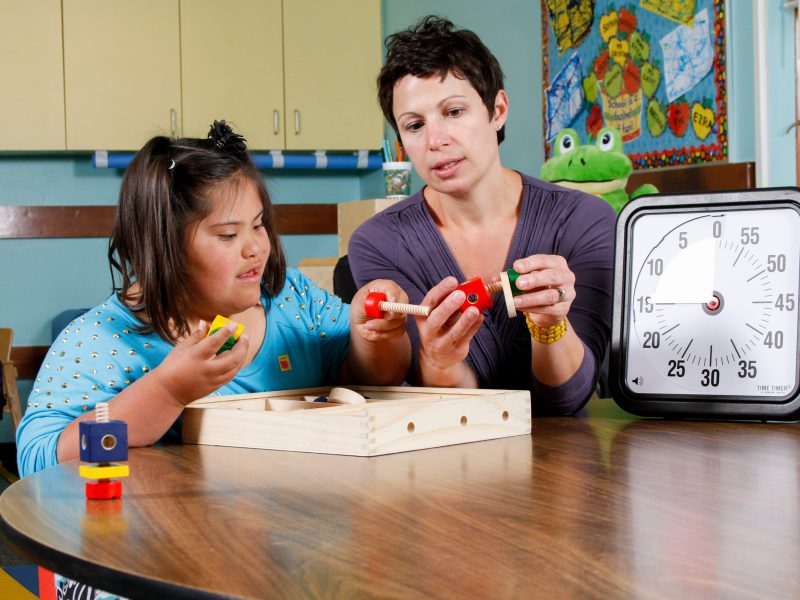
Faculty in the Department of Occupational Therapy are pursuing research interests including, but not limited to:
- behavioral health
- daily life skills
- disability and inclusion
- environmental access and modification
- health equities and disparities
- health promotion
- independent living
- interprofessional education and practice
- occupational performance
- quality of life
- transition services
- well-being
- chronic conditions
- assessment and evaluation
- physical disabilities
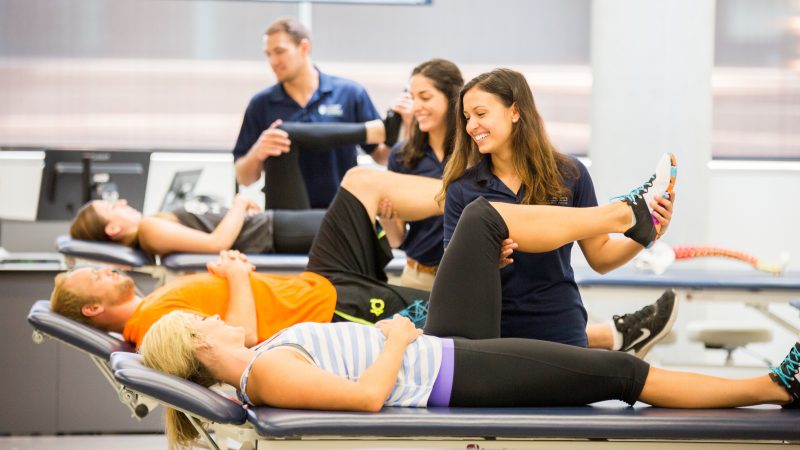
Physical Therapy and Athletic Training
The faculty in the Department of Physical Therapy and Athletic Training have a wide range of research interests. In general, the projects reach into these broad categories:
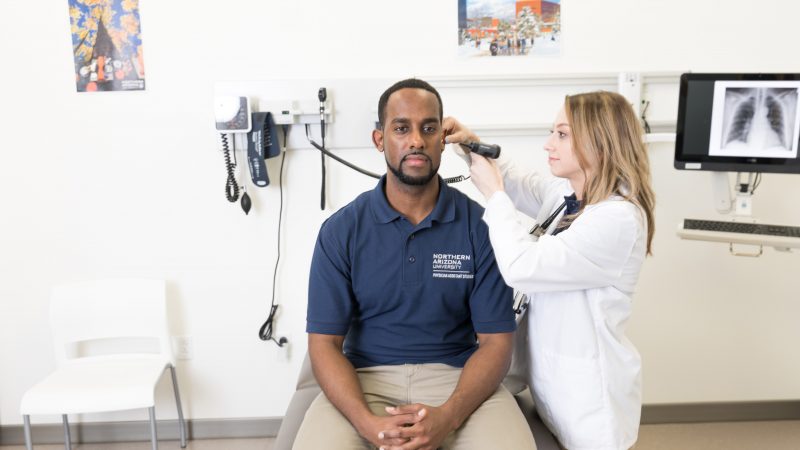
Physician Assistant Studies
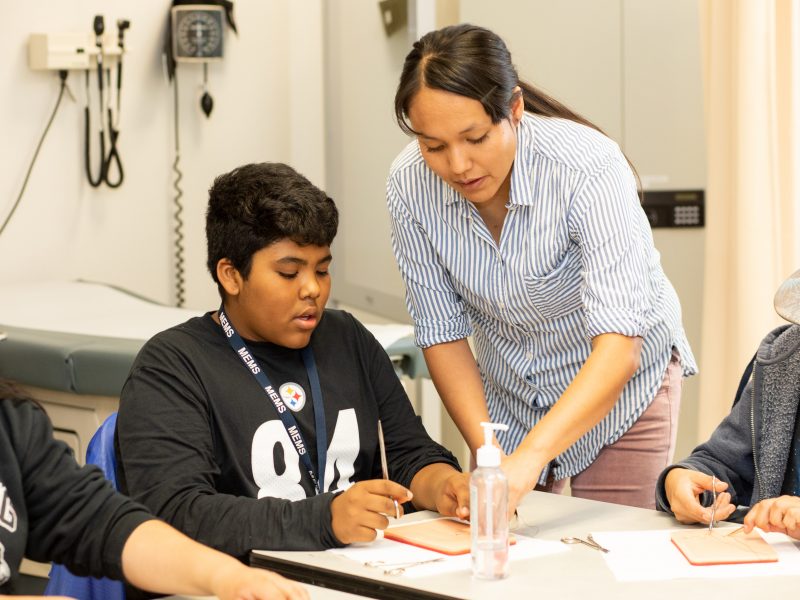
Faculty in the Department of Physician Assistant Studies are pursuing research interests including, but not limited to:
- health services
- health professions education
- contributions of PAs/NPs to healthcare delivery
- diversity in health professions education, particularly PA education
- factors associated with effective team-delivered health care
- interprofessional education
- factors associated with work-related well-being among healthcare providers
- health services research (workforce, provider utilization, practice trends, etc.)
- diversity trends in health professions and the PA profession
- healthcare workforce issues in medically underserved populations and communities
- educational program accreditation and assessment
- growth and development of publications and scholarship in the PA profession (the history and progression of PA research)
- PA leadership
